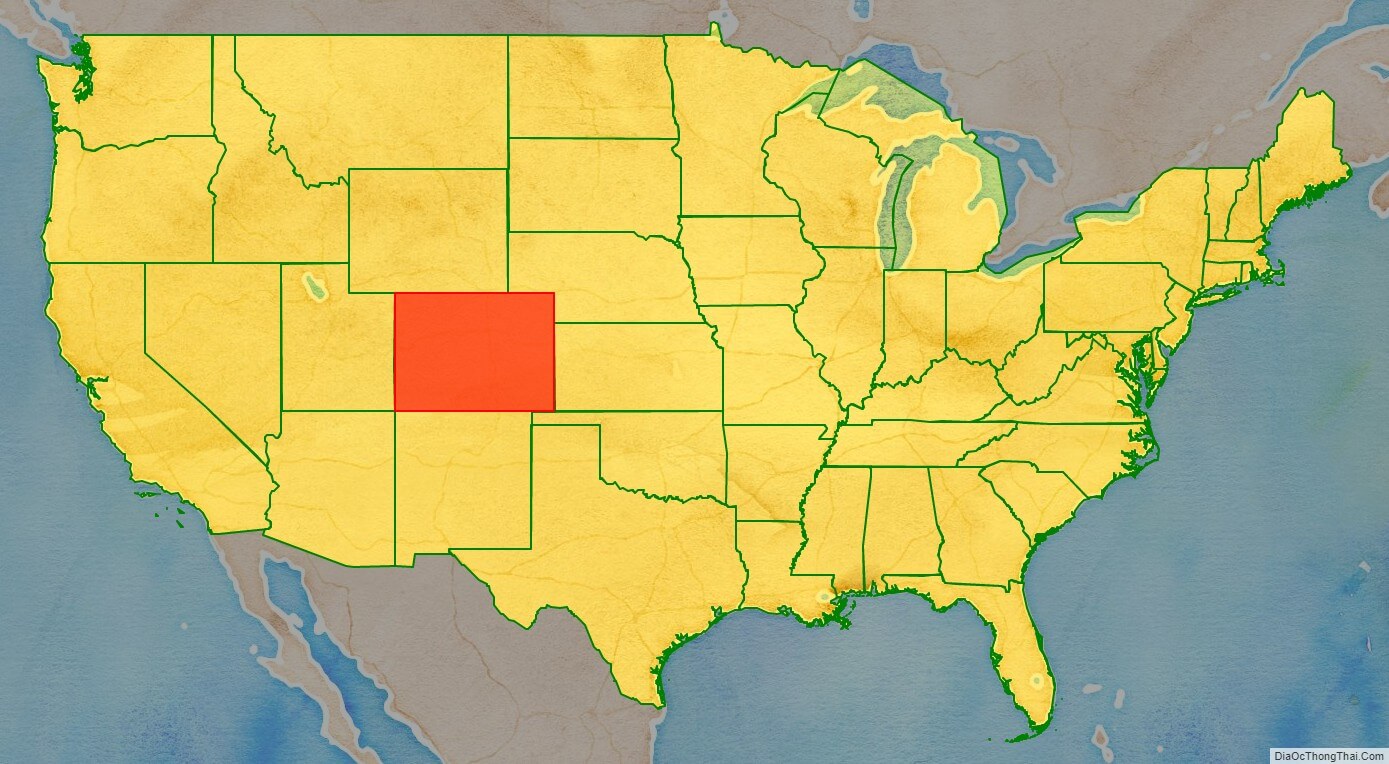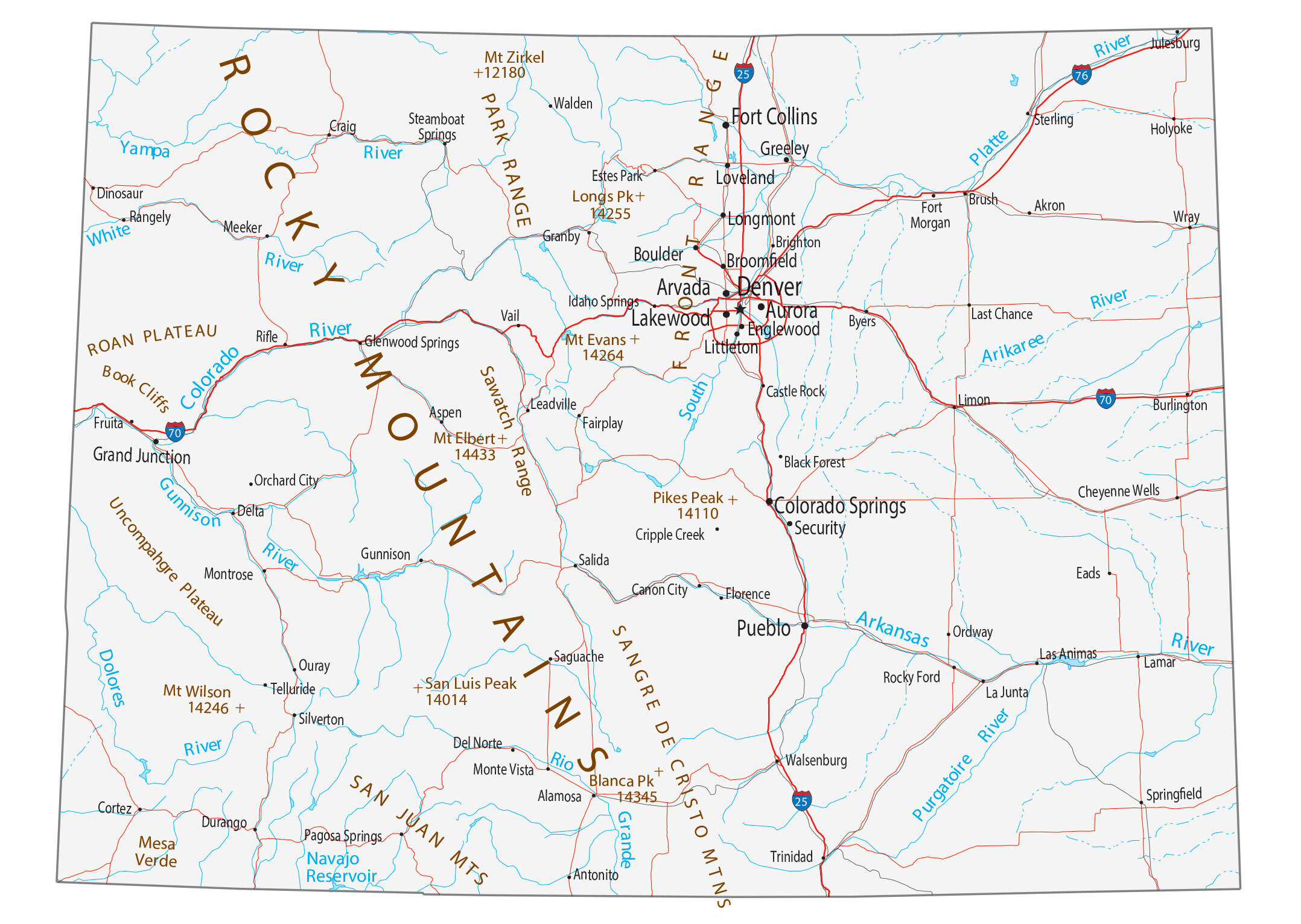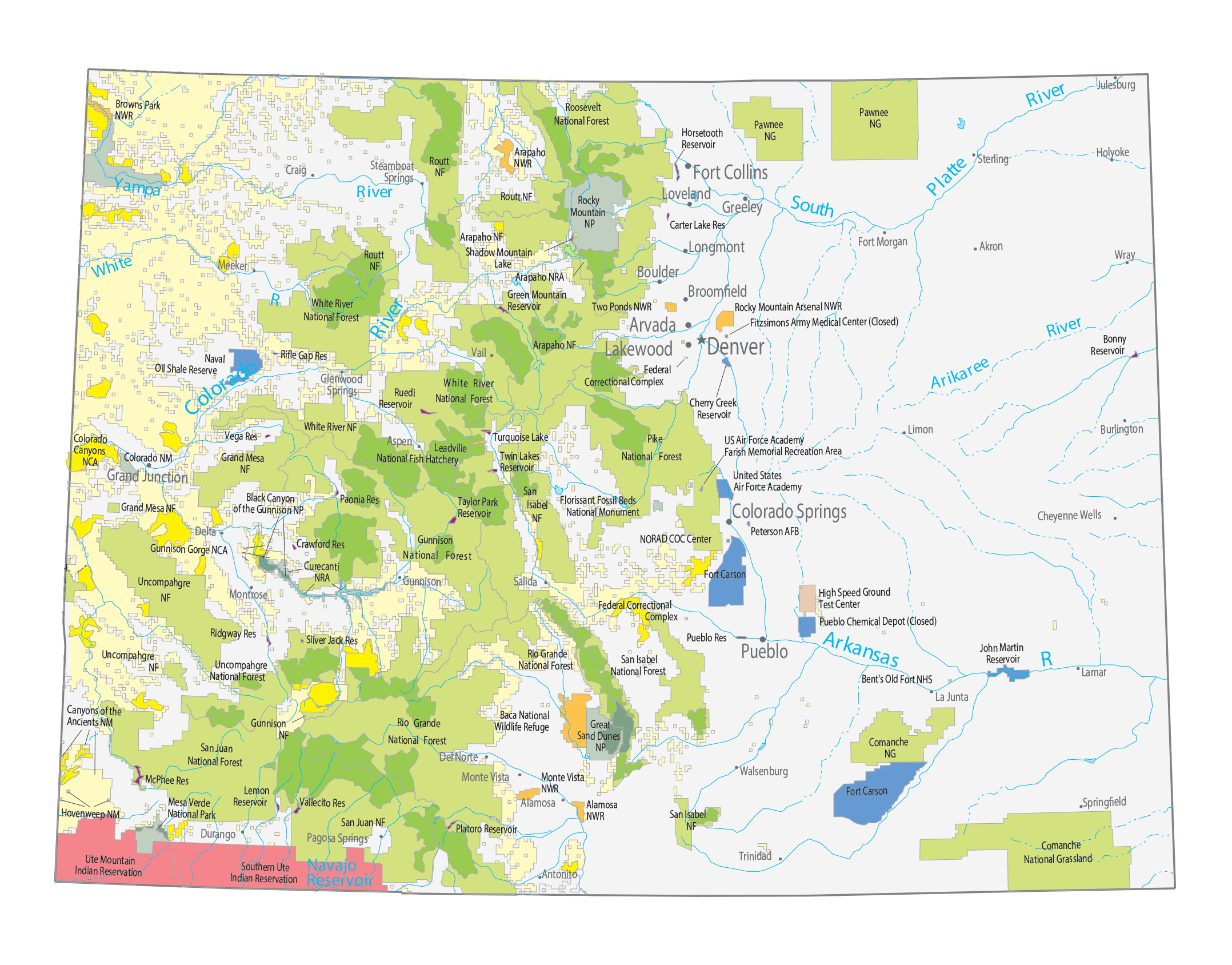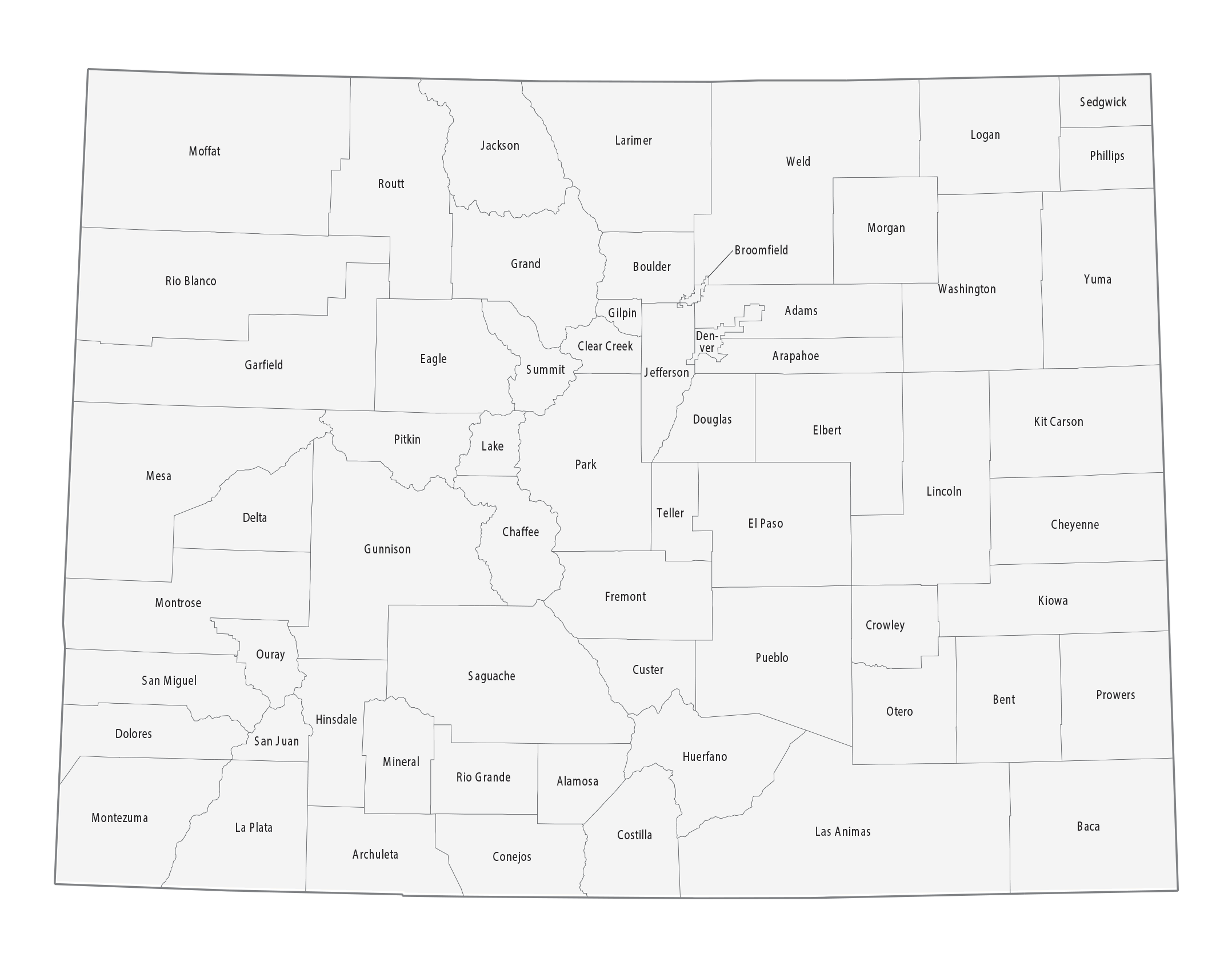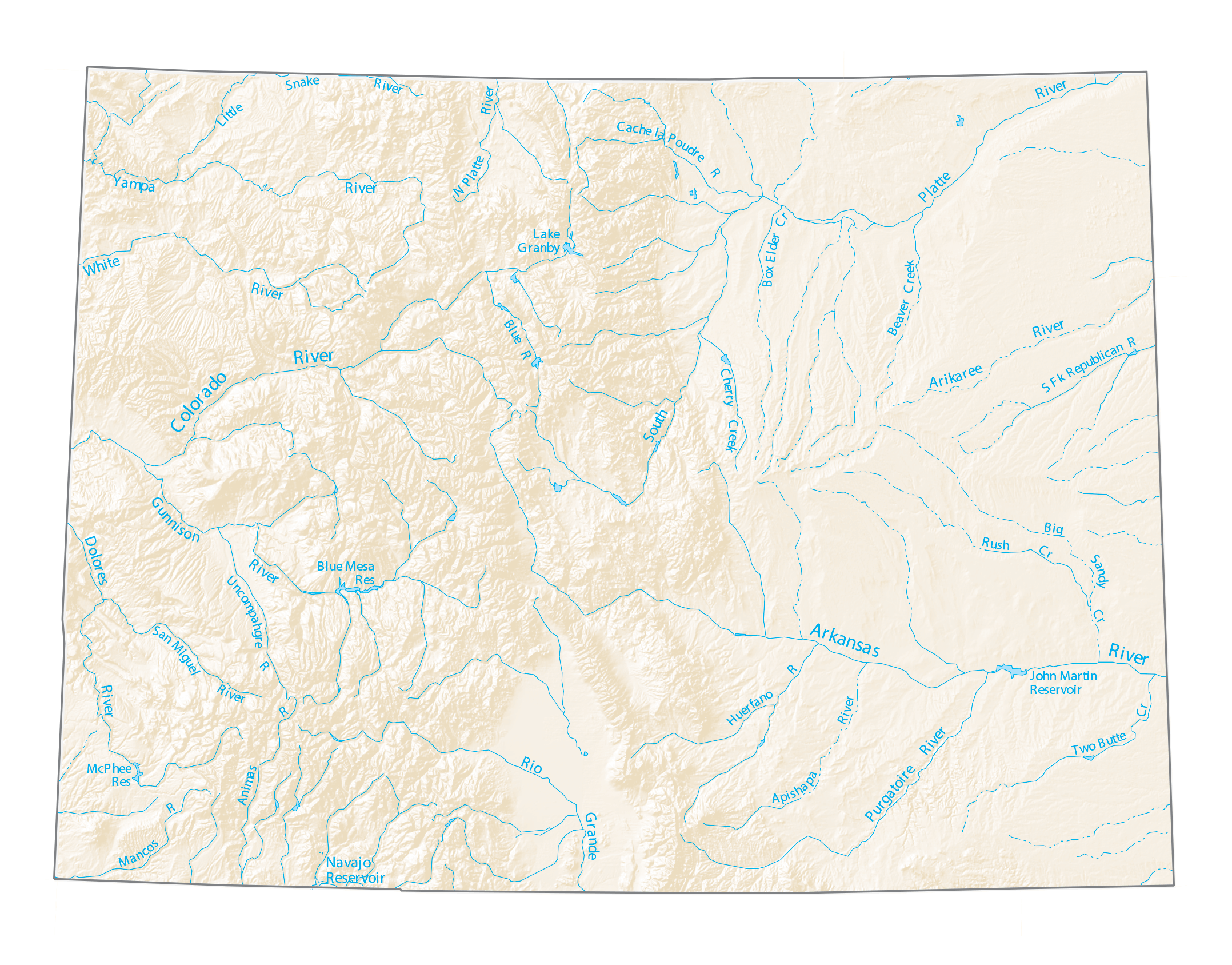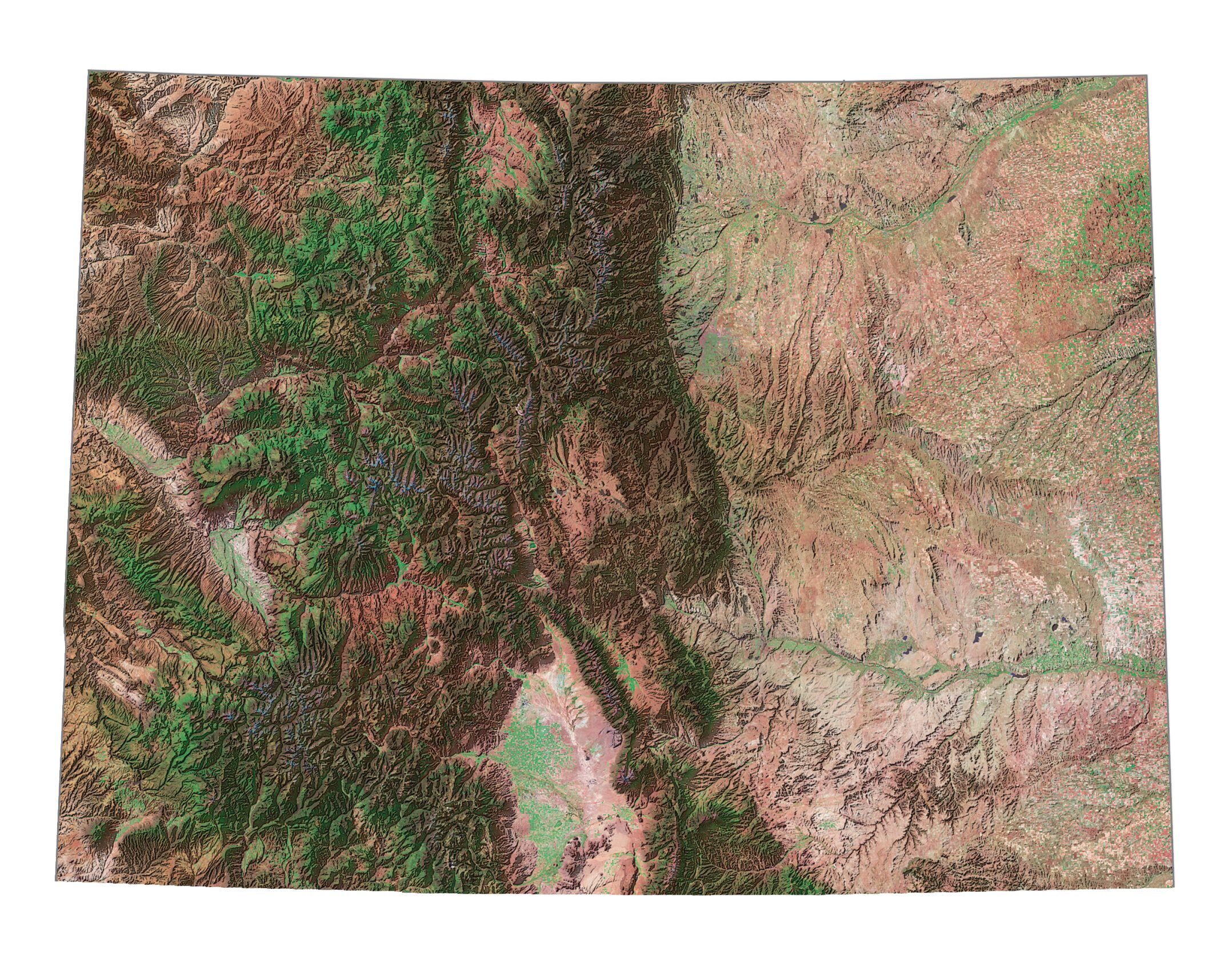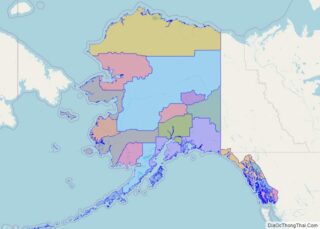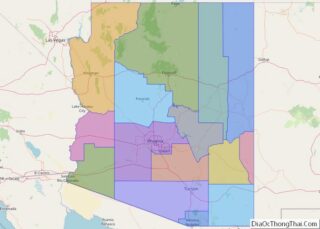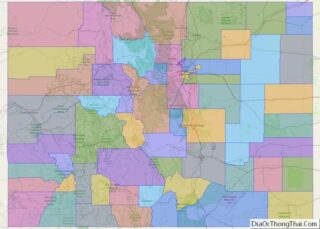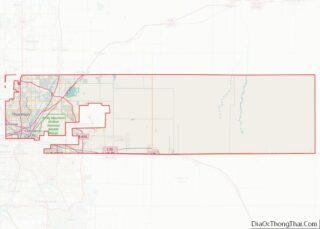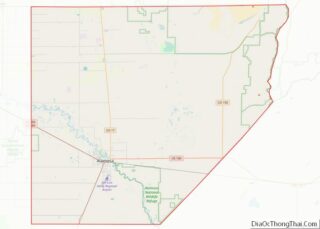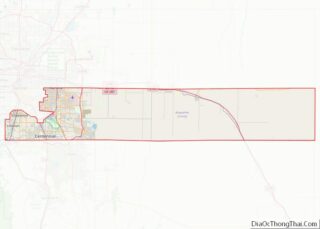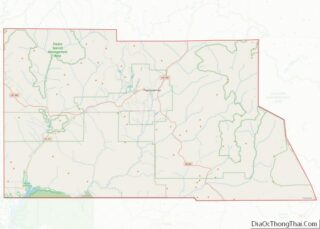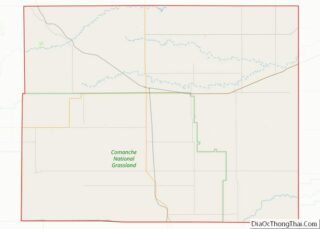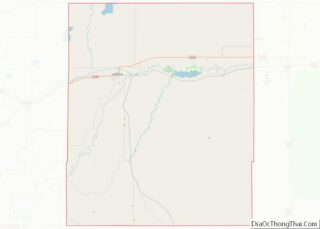Colorado (/ˌkɒləˈrædoʊ, -ˈrɑːdoʊ/ (listen), other variants) is a state in the Mountain West subregion of the Western United States. It encompasses most of the Southern Rocky Mountains, as well as the northeastern portion of the Colorado Plateau and the western edge of the Great Plains. Colorado is the eighth most extensive and 21st most populous U.S. state. The 2020 United States census enumerated the population of Colorado at 5,773,714, an increase of 14.80% since the 2010 census.
The region has been inhabited by Native Americans and their ancestors for at least 13,500 years and possibly much longer. The eastern edge of the Rocky Mountains was a major migration route for early peoples who spread throughout the Americas. “Coloradocode: spa promoted to code: es ” is the Spanish adjective meaning “red”, the color of the Fountain Formation outcroppings found up and down the Front Range of the Rocky Mountains. The Territory of Colorado was organized on February 28, 1861, and on August 1, 1876, U.S. President Ulysses S. Grant signed Proclamation 230 admitting Colorado to the Union as the 38th state. Colorado is nicknamed the “Centennial State” because it became a state one century (and four weeks) after the signing of the United States Declaration of Independence.
Colorado is bordered by Wyoming to the north, Nebraska to the northeast, Kansas to the east, Oklahoma to the southeast, New Mexico to the south, and Utah to the west, and touches Arizona to the southwest at the Four Corners. Colorado is noted for its vivid landscape of mountains, forests, high plains, mesas, canyons, plateaus, rivers, and desert lands. Colorado is one of the Mountain states, and is a part of the western, and is often considered to be part of the southwestern, United States.
Denver is the capital and most populous city. Residents of the state are known as Coloradans, although the antiquated “Coloradoan” is occasionally used. Major parts of the economy include government and defense, mining, agriculture, tourism, and increasingly other kinds of manufacturing. With increasing temperatures and decreasing water availability, Colorado’s agriculture, forestry, and tourism economies are expected to be heavily affected by climate change.
The state is one of the most educated, developed, and wealthiest, ranking 3rd in percentage of population 25 and over with a bachelor’s degree and 8th in percentage of population 25 and over with an advanced degree, 9th on the American Human Development Index, and 8th in per capita income and 9th in median household income.
| Before statehood: | Colorado Territory |
|---|---|
| Admitted to the Union: | August 1, 1876 (38th) |
| Capital: | Denver |
| Capital – largest city: | largest city |
| Largest metro and urban areas: | Denver |
| Elevation: | 6,800 ft (2,070 m) |
| Total Area: | 104,094 sq mi (269,837 km) |
| Area Rank: | 8th |
| Total Population: | 5,773,714 |
| Population Rank: | 21st |
| Population Density: | 55.47/sq mi (21.40/km) |
| Population Density Rank: | 37th |
| Median Household Income: | $75,200 |
| Income Rank: | 9th |
| Demonym(s): | Coloradan |
| USPS abbreviation: | CO |
| ISO 3166 code: | US-CO |
| Website: | www.colorado.gov |
Online Interactive Map
Click on ![]() to view map in "full screen" mode.
to view map in "full screen" mode.
Colorado location map. Where is Colorado state?
Colorado Road Map
Colorado Map – Roads & Cities
Colorado Street Map
Colorado State Map – Places and Landmarks
Colorado Political Map
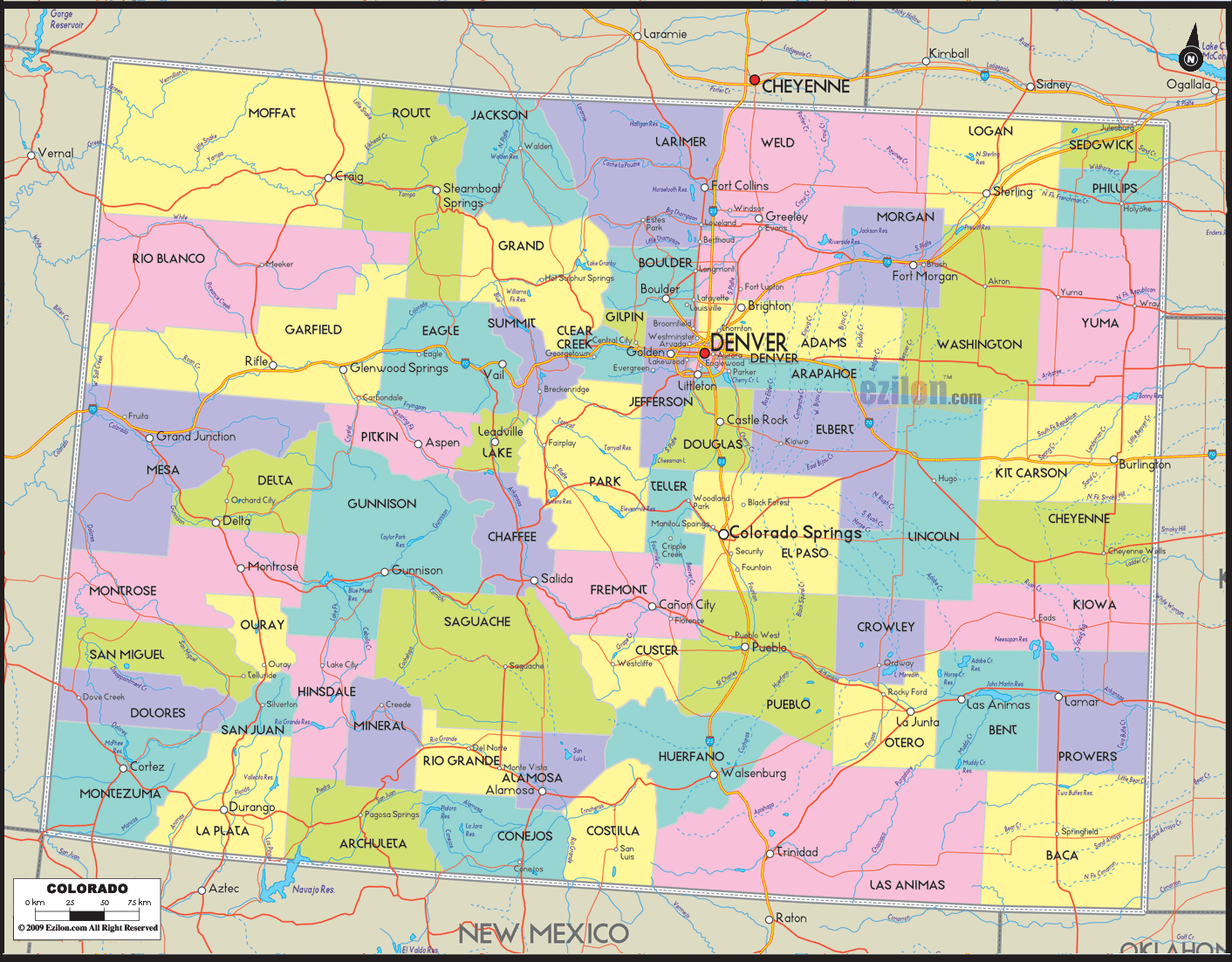
Colorado Lakes and Rivers Map
Geography
Colorado is notable for its diverse geography, which includes alpine mountains, high plains, deserts with huge sand dunes, and deep canyons. In 1861, the United States Congress defined the boundaries of the new Territory of Colorado exclusively by lines of latitude and longitude, stretching from 37°N to 41°N latitude, and from 102°02′48″W to 109°02′48″W longitude (25°W to 32°W from the Washington Meridian). After 162 years of government surveys, the borders of Colorado were officially defined by 697 boundary markers and 697 straight boundary lines. Colorado, Wyoming, and Utah are the only states that have their borders defined solely by straight boundary lines with no natural features. The southwest corner of Colorado is the Four Corners Monument at 36°59′56″N, 109°2′43″W. The Four Corners Monument, located at the place where Colorado, New Mexico, Arizona, and Utah meet, is the only place in the United States where four states meet.
Plains
Approximately half of Colorado is flat and rolling land. East of the Rocky Mountains are the Colorado Eastern Plains of the High Plains, the section of the Great Plains within Colorado at elevations ranging from roughly 3,350 to 7,500 feet (1,020 to 2,290 m). The Colorado plains are mostly prairies but also include deciduous forests, buttes, and canyons. Precipitation averages 15 to 25 inches (380 to 640 mm) annually.
Eastern Colorado is presently mainly farmland and rangeland, along with small farming villages and towns. Corn, wheat, hay, soybeans, and oats are all typical crops. Most villages and towns in this region boast both a water tower and a grain elevator. Irrigation water is available from both surface and subterranean sources. Surface water sources include the South Platte, the Arkansas River, and a few other streams. Subterranean water is generally accessed through artesian wells. Heavy usage of these wells for irrigation purposes caused underground water reserves to decline in the region. Eastern Colorado also hosts a considerable amount and range of livestock, such as cattle ranches and hog farms.
Front Range
Roughly 70% of Colorado’s population resides along the eastern edge of the Rocky Mountains in the Front Range Urban Corridor between Cheyenne, Wyoming, and Pueblo, Colorado. This region is partially protected from prevailing storms that blow in from the Pacific Ocean region by the high Rockies in the middle of Colorado. The “Front Range” includes Denver, Boulder, Fort Collins, Loveland, Castle Rock, Colorado Springs, Pueblo, Greeley, and other townships and municipalities in between. On the other side of the Rockies, the significant population centers in western Colorado (which is known as “The Western Slope”) are the cities of Grand Junction, Durango, and Montrose.
Mountains
To the west of the Great Plains of Colorado rises the eastern slope of the Rocky Mountains. Notable peaks of the Rocky Mountains include Longs Peak, Mount Evans, Pikes Peak, and the Spanish Peaks near Walsenburg, in southern Colorado. This area drains to the east and the southeast, ultimately either via the Mississippi River or the Rio Grande into the Gulf of Mexico.
The Rocky Mountains within Colorado contain 53 true peaks with a total of 58 that are 14,000 feet (4,267 m) or higher in elevation above sea level, known as fourteeners. These mountains are largely covered with trees such as conifers and aspens up to the tree line, at an elevation of about 12,000 feet (3,658 m) in southern Colorado to about 10,500 feet (3,200 m) in northern Colorado. Above this tree line, only alpine vegetation grows. Only small parts of the Colorado Rockies are snow-covered year-round.
Much of the alpine snow melts by mid-August except for a few snow-capped peaks and a few small glaciers. The Colorado Mineral Belt, stretching from the San Juan Mountains in the southwest to Boulder and Central City on the front range, contains most of the historic gold- and silver-mining districts of Colorado. Mount Elbert is the highest summit of the Rocky Mountains. The 30 highest major summits of the Rocky Mountains of North America are all within the state.
The summit of Mount Elbert at 14,440 feet (4,401.2 m) elevation in Lake County is the highest point in Colorado and the Rocky Mountains of North America. Colorado is the only U.S. state that lies entirely above 1,000 meters elevation. The point where the Arikaree River flows out of Yuma County, Colorado, and into Cheyenne County, Kansas, is the lowest in Colorado at 3,317 feet (1,011 m) elevation. This point, which is the highest low elevation point of any state, is higher than the high elevation points of 18 states and the District of Columbia.
The Continental Divide of the Americas extends along the crest of the Rocky Mountains. The area of Colorado to the west of the Continental Divide is called the Western Slope of Colorado. West of the Continental Divide, water flows to the southwest via the Colorado River and the Green River into the Gulf of California.
Within the interior of the Rocky Mountains are several large parks which are high broad basins. In the north, on the east side of the Continental Divide is the North Park of Colorado. The North Park is drained by the North Platte River, which flows north into Wyoming and Nebraska. Just to the south of North Park, but on the western side of the Continental Divide, is the Middle Park of Colorado, which is drained by the Colorado River. The South Park of Colorado is the region of the headwaters of the South Platte River.
South Central region
In south-central Colorado is the large San Luis Valley, where the headwaters of the Rio Grande are located. The northern part of the valley is the San Luis Closed Basin, an endorheic basin that helped created the Great Sand Dunes. The valley sits between the Sangre De Cristo Mountains and San Juan Mountains. The Rio Grande drains due south into New Mexico, Texas, and Mexico. Across the Sangre de Cristo Range to the east of the San Luis Valley lies the Wet Mountain Valley. These basins, particularly the San Luis Valley, lie along the Rio Grande Rift, a major geological formation of the Rocky Mountains, and its branches.
Western Slope
The Western Slope of Colorado includes the western face of the Rocky Mountains and all of the area to the western border. This area includes several terrains and climates from alpine mountains to arid deserts. The Western Slope includes many ski resort towns in the Rocky Mountains and towns west to Utah. It is less populous than the Front Range but includes a large number of national parks and monuments.
The northwestern corner of Colorado is a sparsely populated region, and it contains part of the noted Dinosaur National Monument, which not only is a paleontological area, but is also a scenic area of rocky hills, canyons, arid desert, and streambeds. Here, the Green River briefly crosses over into Colorado.
The Western Slope of Colorado is drained by the Colorado River and its tributaries (primarily the Gunnison River, Green River, and the San Juan River). The Colorado River flows through Glenwood Canyon, and then through an arid valley made up of desert from Rifle to Parachute, through the desert canyon of De Beque Canyon, and into the arid desert of Grand Valley, where the city of Grand Junction is located.
Also prominent is the Grand Mesa, which lies to the southeast of Grand Junction; the high San Juan Mountains, a rugged mountain range; and to the north and west of the San Juan Mountains, the Colorado Plateau.
Grand Junction, Colorado, at the confluence of the Colorado and Gunnison Rivers, is the largest city on the Western Slope. Grand Junction and Durango are the only major centers of television broadcasting west of the Continental Divide in Colorado, though most mountain resort communities publish daily newspapers. Grand Junction is located at the juncture of Interstate 70 and US 50, the only major highways in western Colorado. Grand Junction is also along the major railroad of the Western Slope, the Union Pacific. This railroad also provides the tracks for Amtrak’s California Zephyr passenger train, which crosses the Rocky Mountains between Denver and Grand Junction.
The Western Slope includes multiple notable destinations in the Colorado Rocky Mountains, including Glenwood Springs, with its resort hot springs, and the ski resorts of Aspen, Breckenridge, Vail, Crested Butte, Steamboat Springs, and Telluride.
Higher education in and near the Western Slope can be found at Colorado Mesa University in Grand Junction, Western Colorado University in Gunnison, Fort Lewis College in Durango, and Colorado Mountain College in Glenwood Springs and Steamboat Springs.
The Four Corners Monument in the southwest corner of Colorado marks the common boundary of Colorado, New Mexico, Arizona, and Utah; the only such place in the United States.
Colorado Physical Map
Colorado Topographic Map
Colorado Satellite Map
Others printable maps
Colorado Outline Map
Blank Colorado County Map
See also
Map of Colorado State and its subdivision:- Adams
- Alamosa
- Arapahoe
- Archuleta
- Baca
- Bent
- Boulder
- Broomfield
- Chaffee
- Cheyenne
- Clear Creek
- Conejos
- Costilla
- Crowley
- Custer
- Delta
- Denver
- Dolores
- Douglas
- Eagle
- El Paso
- Elbert
- Fremont
- Garfield
- Gilpin
- Grand
- Gunnison
- Hinsdale
- Huerfano
- Jackson
- Jefferson
- Kiowa
- Kit Carson
- La Plata
- Lake
- Larimer
- Las Animas
- Lincoln
- Logan
- Mesa
- Mineral
- Moffat
- Montezuma
- Montrose
- Morgan
- Otero
- Ouray
- Park
- Phillips
- Pitkin
- Prowers
- Pueblo
- Rio Blanco
- Rio Grande
- Routt
- Saguache
- San Juan
- San Miguel
- Sedgwick
- Summit
- Teller
- Washington
- Weld
- Yuma
- Alabama
- Alaska
- Arizona
- Arkansas
- California
- Colorado
- Connecticut
- Delaware
- District of Columbia
- Florida
- Georgia
- Hawaii
- Idaho
- Illinois
- Indiana
- Iowa
- Kansas
- Kentucky
- Louisiana
- Maine
- Maryland
- Massachusetts
- Michigan
- Minnesota
- Mississippi
- Missouri
- Montana
- Nebraska
- Nevada
- New Hampshire
- New Jersey
- New Mexico
- New York
- North Carolina
- North Dakota
- Ohio
- Oklahoma
- Oregon
- Pennsylvania
- Rhode Island
- South Carolina
- South Dakota
- Tennessee
- Texas
- Utah
- Vermont
- Virginia
- Washington
- West Virginia
- Wisconsin
- Wyoming
